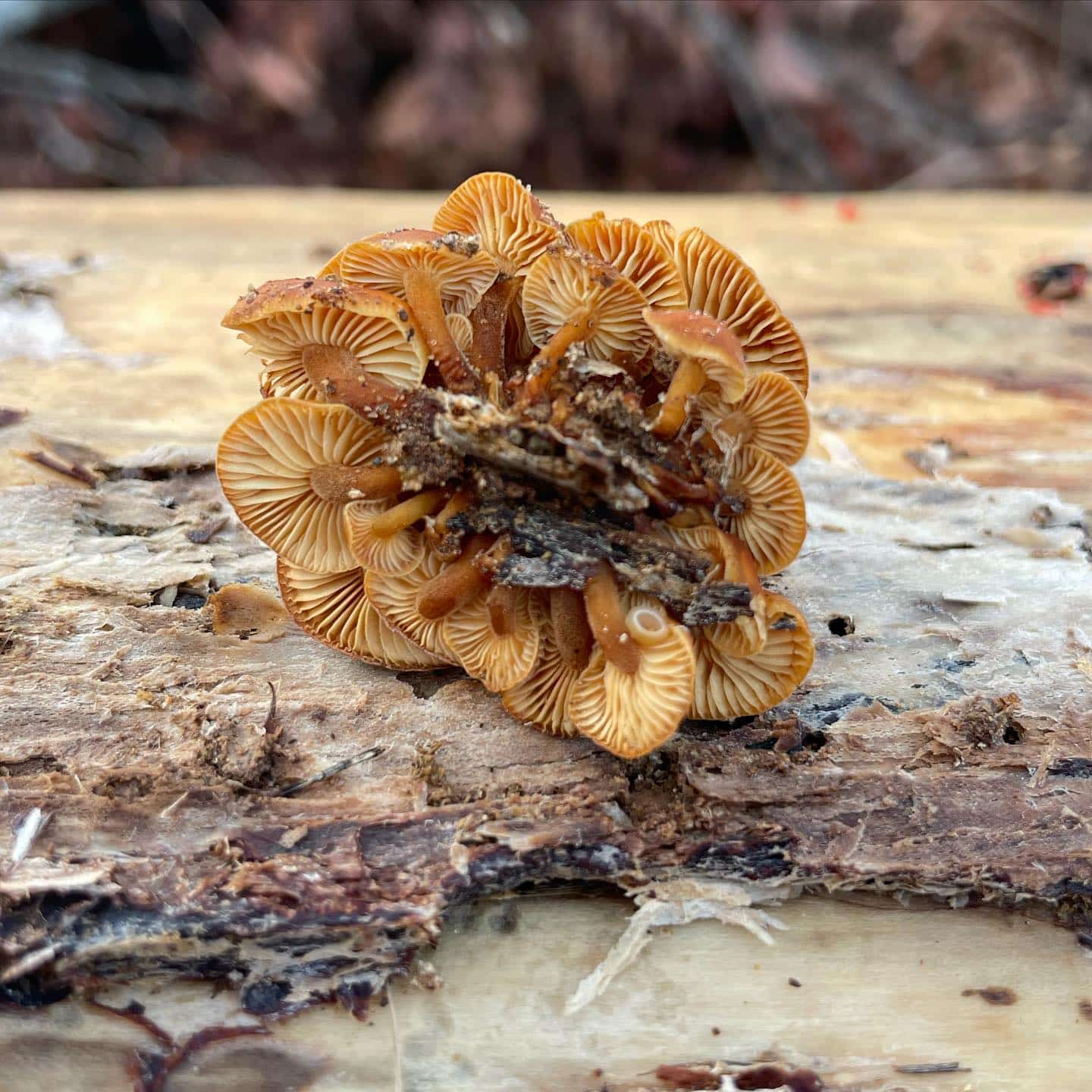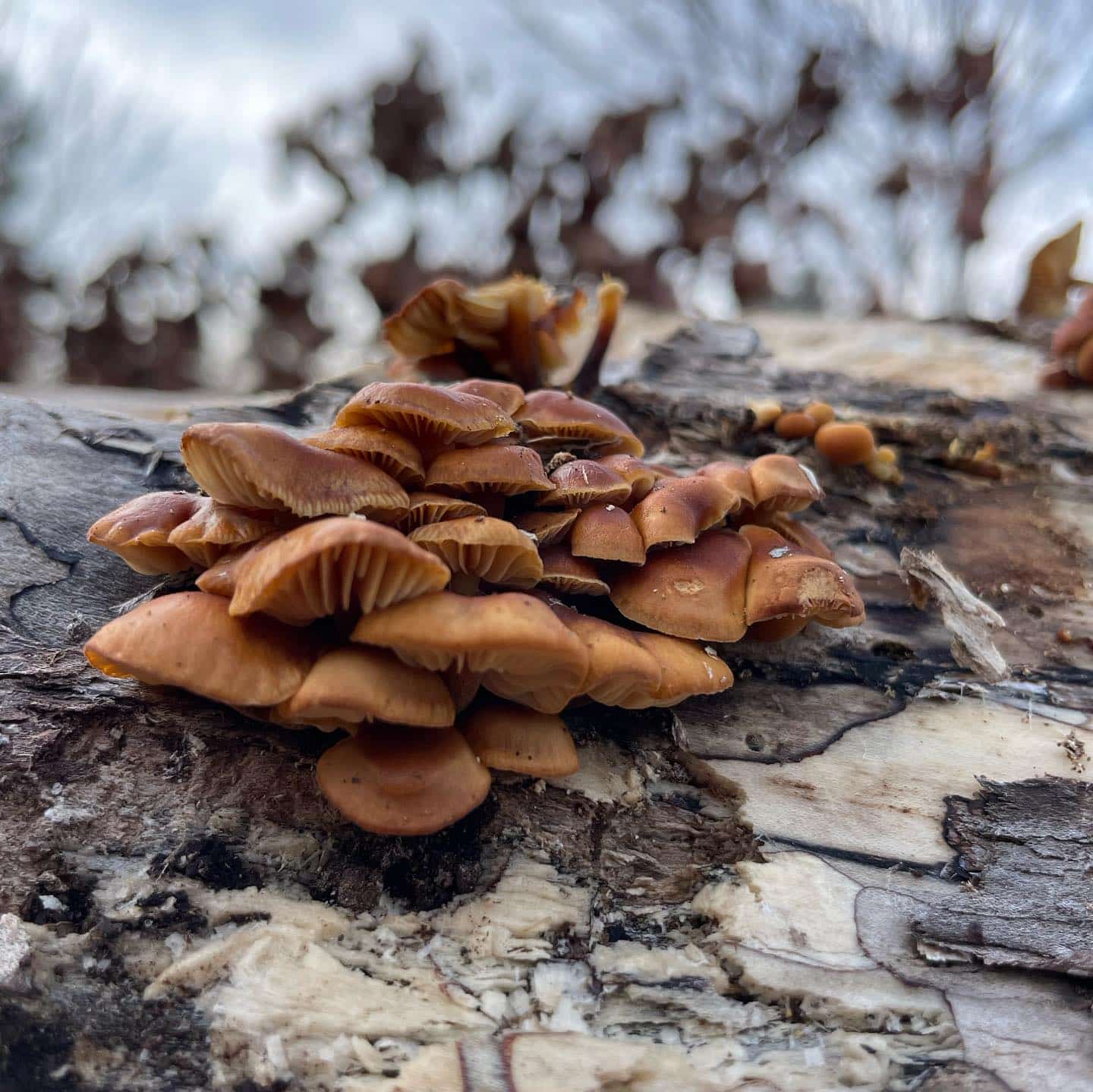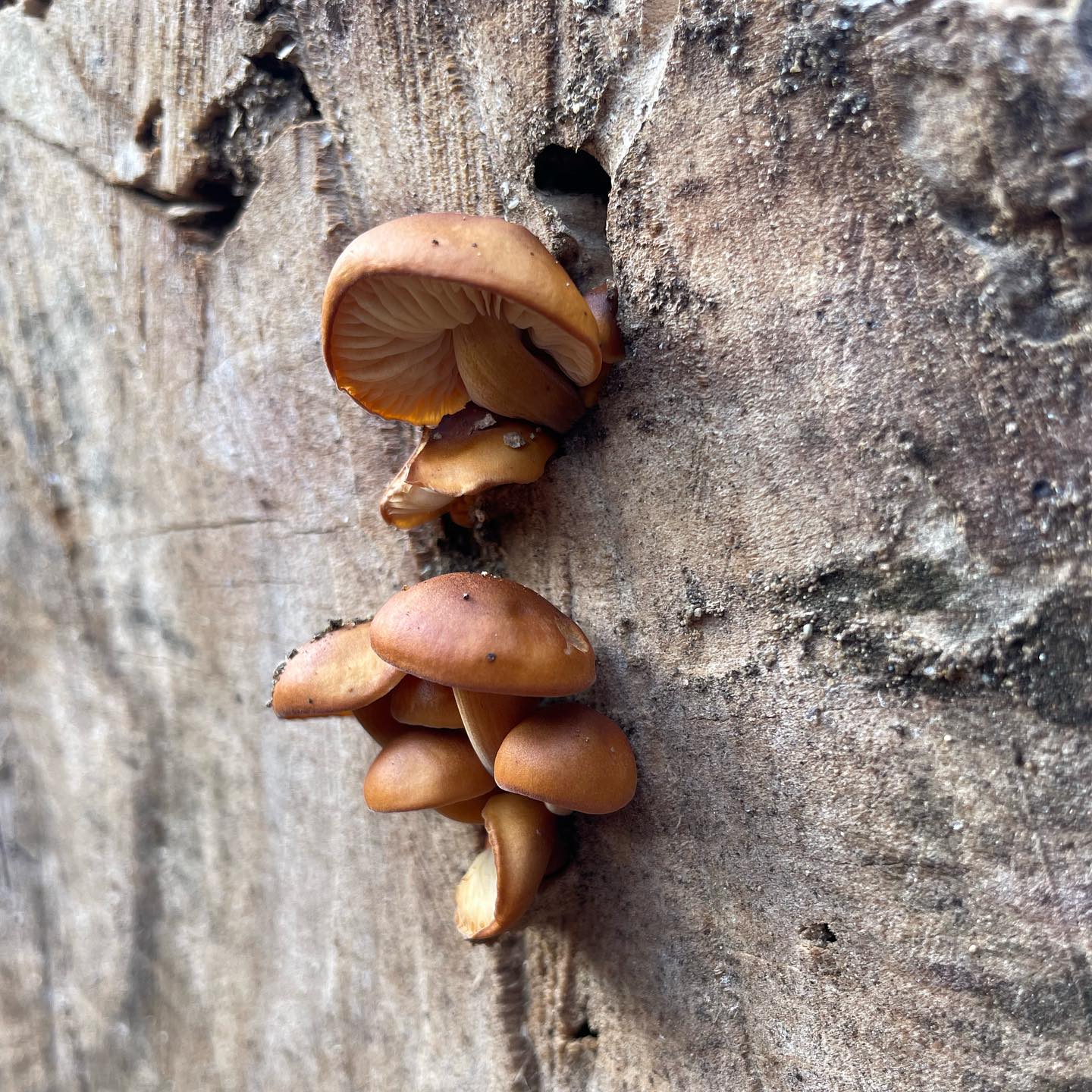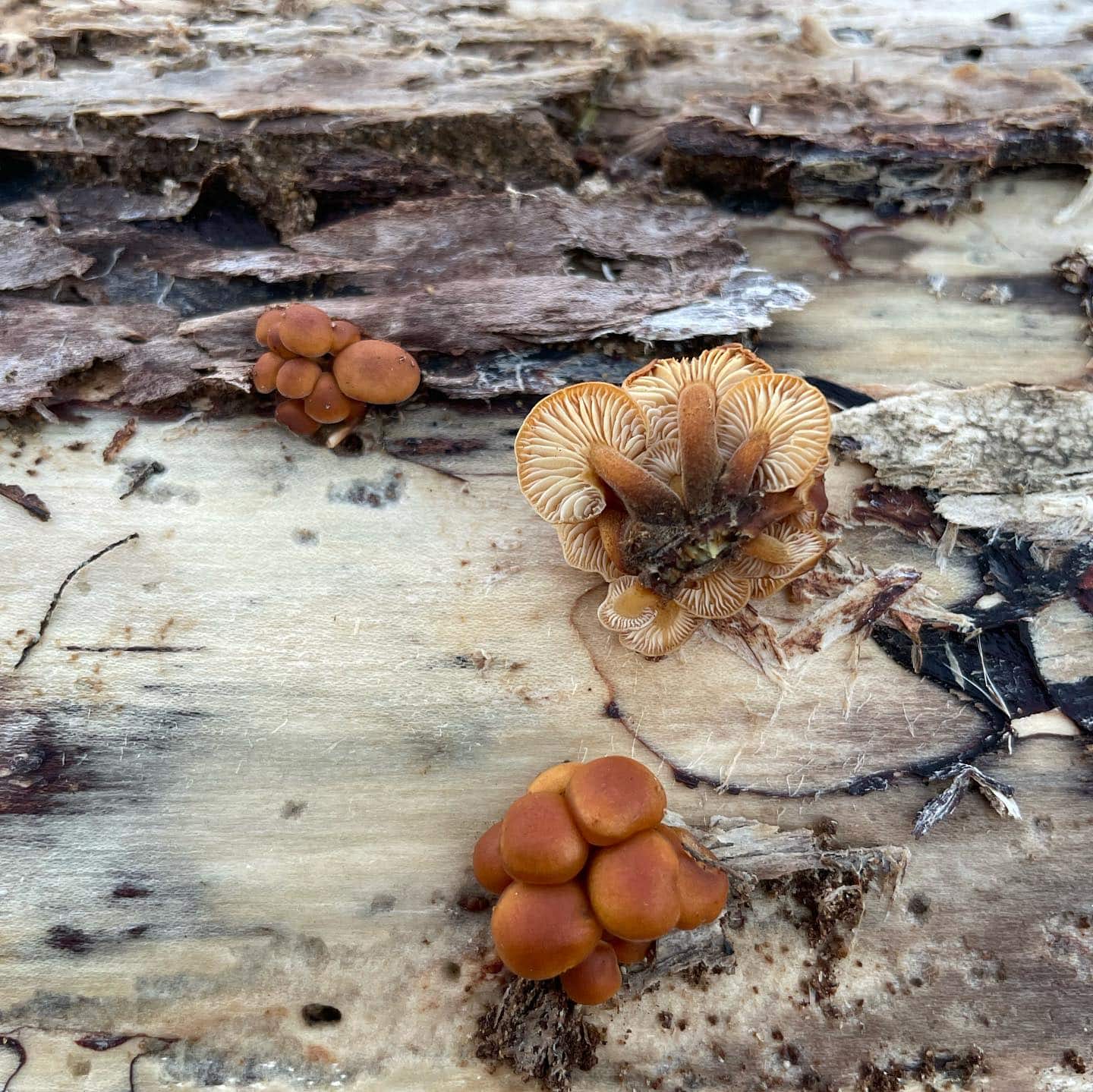Page Created by Connecticut Foraging Club
Upcoming Events | Meet the Instructors | Plant Archive | Mushroom Archive
----------------
Upcoming Events | Meet the Instructors | Plant Archive | Mushroom Archive
----------------
Enoki (Flammulina velutipes) are a difficult-to-identify edible mushrooms that can be found growing in the colder months of the year.

Enoki, also known as Velvet Foot, can be found growing on dead, often standing hardwoods, especially elms, poplars, and willows. They fruit from October to May. Enoki can be foraged all winter long as they can survive freezing temperatures.
Enoki have caps that are 2-5 cm wide, slimy, and colored orange-brown with paler yellow tones around the margin. Stems are velvety, yellowish at the top and darker at the base. The stems darken with age. Flesh is white or pale yellow and rubbery. Spore print is white.

Enoki usually grow in small clusters, but can occasionally be found growing singularly.
Enoki caps can be sautéed for a few minutes to enjoy their slightly nutty taste. Enoki can also be dehydrated, powdered, and added to soups, stews, or sauces.

A similar species (Flammulina filiformis) is commonly cultivated. Cultivated enoki are white and have long stems and small caps. This unique appearance is due to the growing conditions of cultivated enoki. Cultivated enoki are packed in bottles with narrow tops and grown in environments with low light and low oxygen to produce this distinct appearance.
Enoki are used as a medicinal mushroom in Asia. Enoki are high in fiber, antioxidants, B vitamins, protein, and amino acids. They have been used to support heart health, improve brain function, boost immunity, and assist cancer treatment.

Wild enoki must be differentiated from their deadly look alike, the Deadly Galerina (Galerina marginata). The deadly Galerina has a similar colored cap and also grows on wood. The deadly Galerina fruits June to September. It has brown flesh and lacks velvet on its stem. The deadly Galerina has a ring around its stem, but this can sometimes fall off. A spore print is needed to positively differentiate the two species. Enoki have a white spore print, while the deadly Galerina has a rusty-brown spore print.
--
Written by Amy Demers, founder of the Connecticut Foraging Club. To learn more about foraging in Connecticut, check out our upcoming classes.






